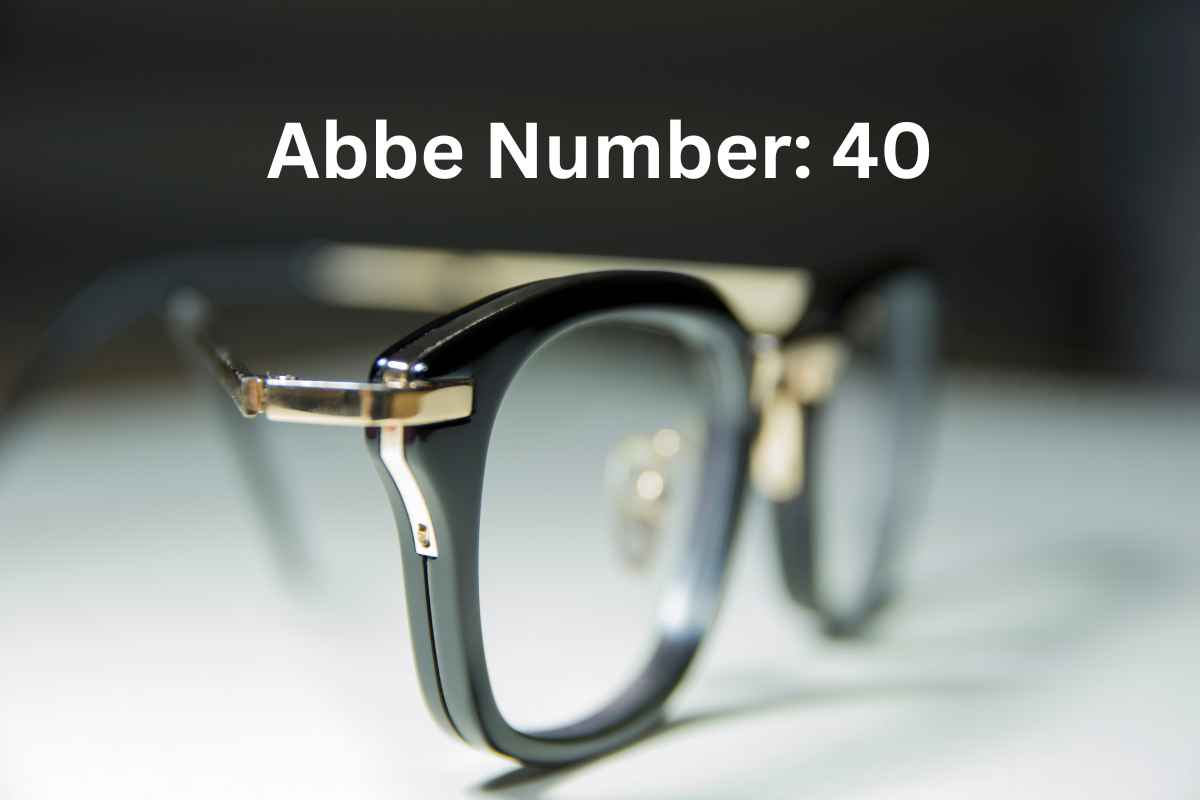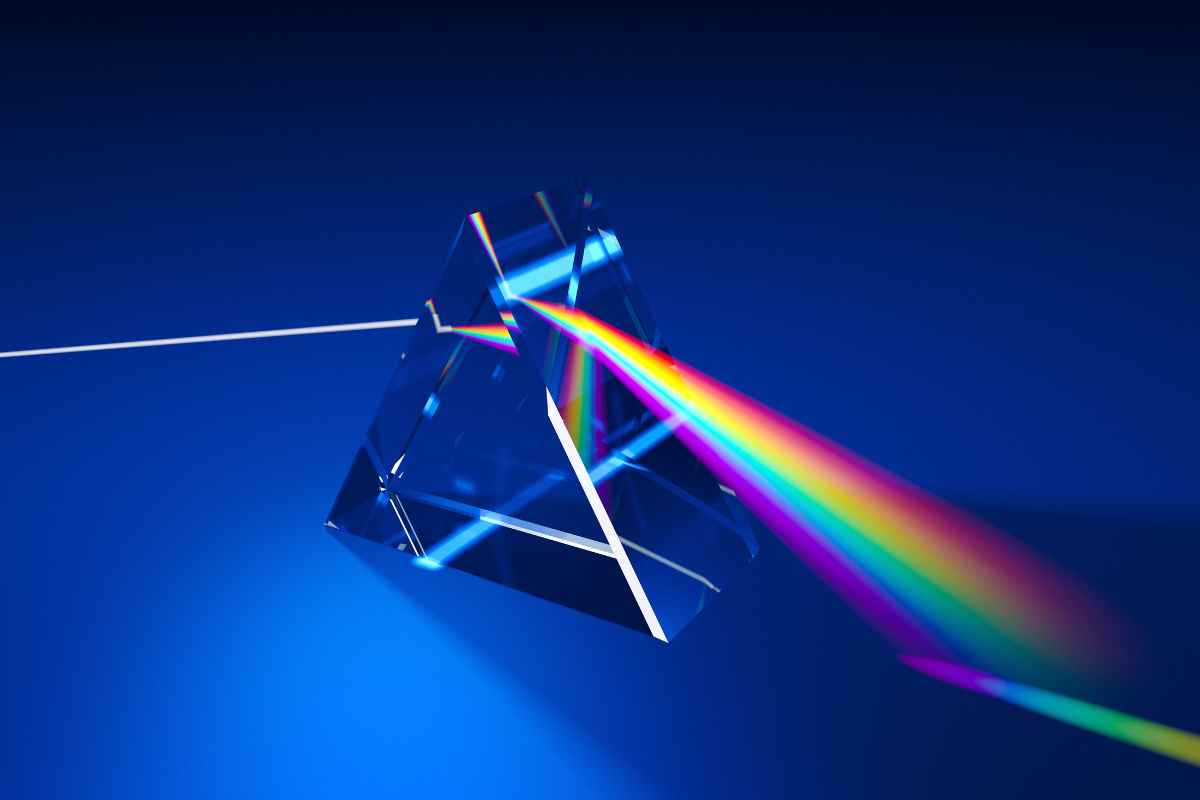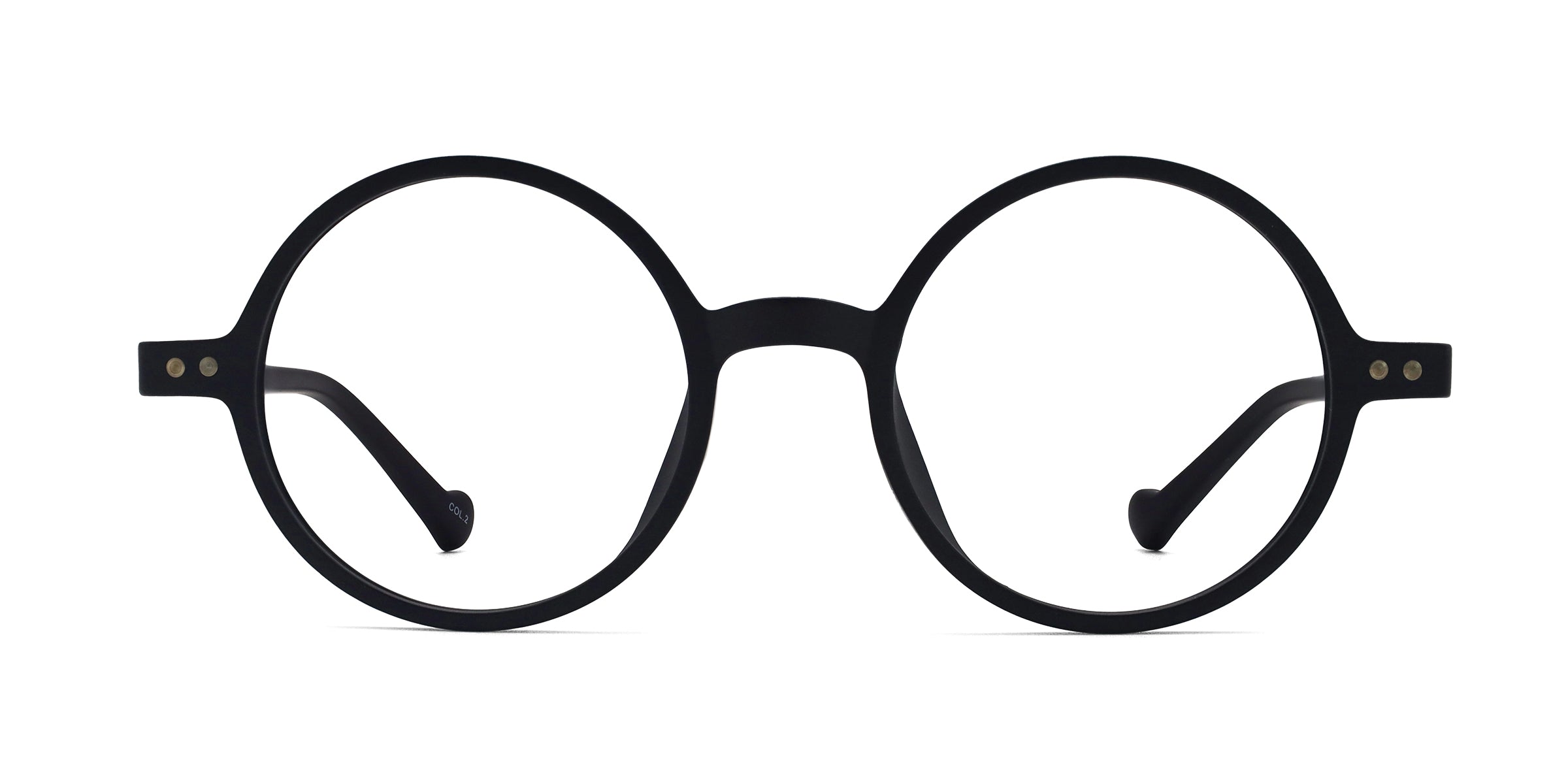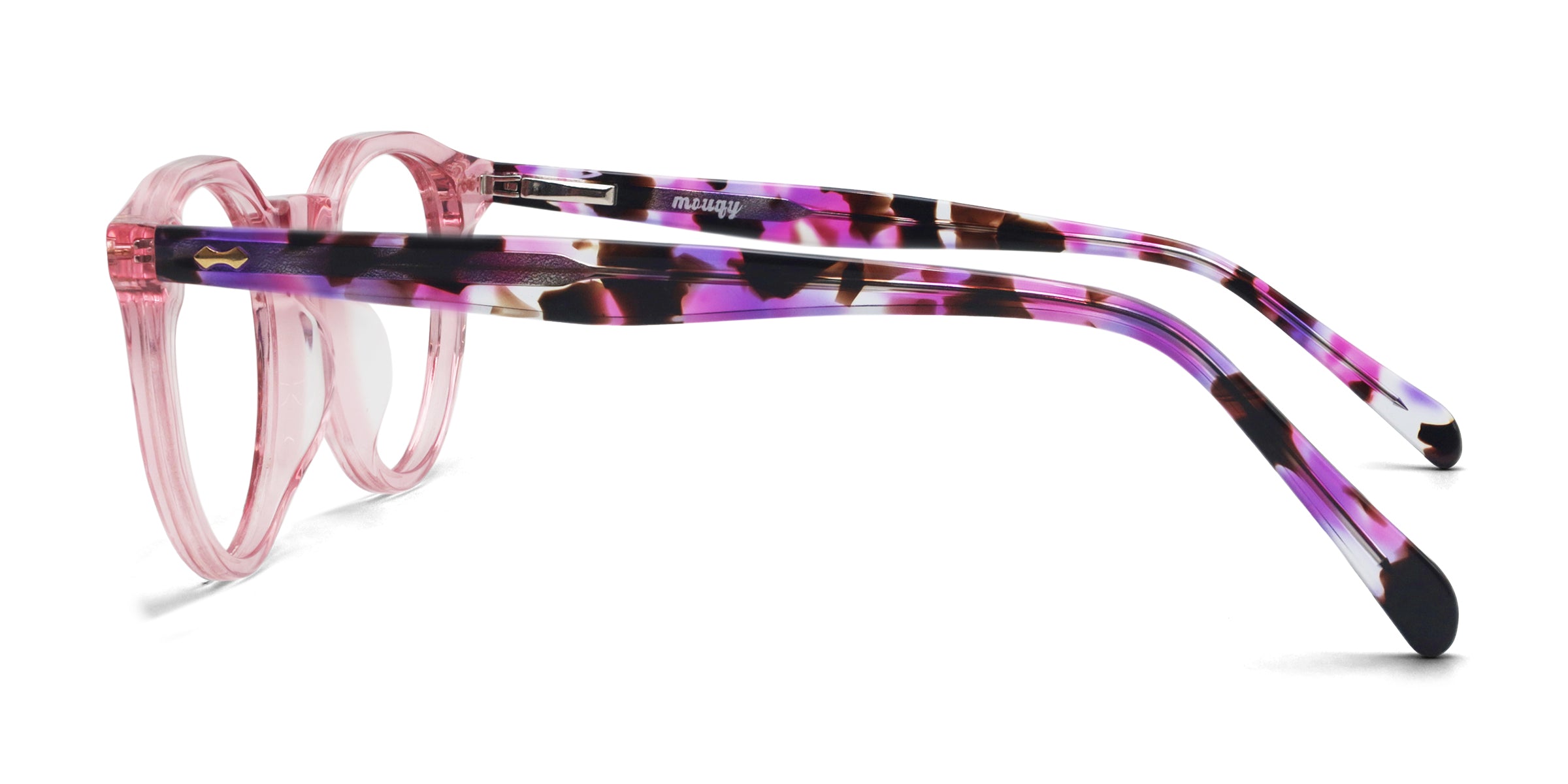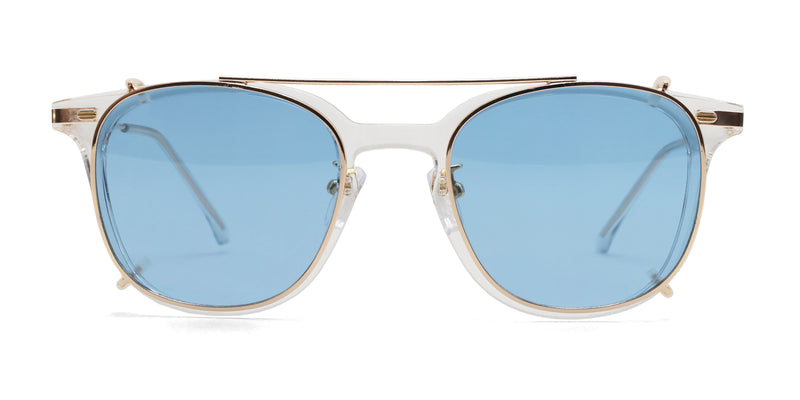What’s an Abbe Number?
Have you ever wondered how your glasses correct your vision and help you see things more clearly?
Well, one of the factors determining your lenses’ effectiveness is the Abbe number.
This number helps us determine how lenses will interact with light, giving us an insight into how our glasses will look–whether they’ll be clear and sharp or slightly blurry.
Read on to find out more about Abbe numbers.
Abbe number, not abba
Believe it or not, the Abbe number has existed for over a century.
It was developed in the late 1800s by a German scientist named Ernst Abbe and was initially used to measure the properties of materials like glass.
Since then, the Abbe number has become crucial for eyewear manufacturers, who use it to determine everything from eyeglass strength to clarity.
An Abbe number is not a random number. It measures the optical quality of lenses, meaning it helps us determine how good our glasses will be.
The higher the Abbe number, the clearer our vision will be, making it an essential factor when choosing a pair of eyeglasses.
It also ensures that different lenses work together in one frame, so you can expect your specs to fit perfectly.
If math and science make your eyes glaze over, don’t worry because the main idea behind the Abbe number is really quite simple.
It’s all about using one formula to calculate how quickly a material can refract light— meaning how much light is scattered as it passes through a lens.
It’s a handy tool for scientists and eyewear manufacturers alike since producing glasses with the right amount of power and clarity starts with understanding exactly how well a material can bend light.
The abbe number is a part of lens design
Abbe numbers measure the optical properties of materials used for lenses. The higher the number, the better the optics.
It’s like a rating system for lenses. This number lets us decide which lenses are best for our eyewear needs.
Lenses with a high Abbe number are better for reduced dispersion.[1]
Basically, dispersion is when light rays are broken down into the visible spectrum of colors. When this happens, the image can appear blurry or lacking in contrast.
That’s why checking the Abbe number of your lenses is essential, and getting one with a higher rating – lower numbers mean more dispersion.
The Abbe number is one of the critical considerations of manufacturers in choosing the best lenses.
This number helps them measure how well a lens refracts light, helping to decide which design will offer the clearest vision with reduced distortion.
Not only that, but a higher Abbe number might mean a thinner and lighter lens — so if you’re looking for something sleek and lightweight, this would be an essential factor to consider.
Plus, it’s good to know exactly what you’re getting when you buy a new pair of glasses.
| Material | Index | Abbe | Density |
| CR-39 | 1.499 | 58 | 1.32 |
| Crown glass | 1.523 | 58 | 2.54 |
| Spectralite | 1.537 | 47 | 1.21 |
| Polycarbonate | 1.586 | 30 | 1.20 |
| RLX Lite | 1.555 | 36 | 1.24 |
| Ormex | 1.558 | 37 | 1.23 |
| Finalite | 1.600 | 42 | 1.22 |
| 1.60 MR-6 | 1.597 | 36 | 1.34 |
| 1.60 MR-7 | 1.660 | 32 | 1.35 |
| 1.6 Index Glass | 1.601 | 40 | 2.62 |
| 1.7 Index Glass | 1.701 | 30 | 2.93 |
| 1.8 Index Glass | 1.805 | 25 | 3.37 |
Not all eyeglass lenses are created equal.
Some have higher refractive indices (the higher the index, the thinner the lens), while others have lower ones.
Some have higher Abbe numbers compared to others.
And that is mainly because of the different materials used in lenses.
Glass lenses
The first lenses were made of glass, which is still used today in making specs lenses.
Glass lenses are pretty durable and scratch-resistant, but they can be heavier.
Crown glass has an index of 1.523, but its Abbe number is 58. On the other hand, high-index glass (1.60 and 1.70) has lower Abbe values (40 and 30, respectively).
Plastic lenses
A popular choice due to its lightweight and affordable nature, plastic lenses come in varying indices.
The higher the index of plastic lenses, the lower the Abbe number is.
For example, the index of Plastic CR-39 is 1.50, and its Abbe number is 58, while high-index plastic (1.66) comes with an Abbe value of 32.
Trivex lenses
This newer material has been gaining popularity because of its high strength-to-weight ratio.
Trivex is one of the lightest lens materials on the market, and it’s also highly impact-resistant, making it a top choice for active people or those with young children.
Trivex generally has a higher Abbe value (53) than many other lens materials, which means it may offer better visual clarity.
Polycarbonate lenses
These lenses are a popular choice due to their durability and impact resistance.
They’re great for active people who need a lens they can rely on.
Polycarbonate lenses have a relatively high index (1.58), meaning they can be made thinner and lighter than other lens materials.
However, they have a lower abbe number (30) than other materials.
Lens material affects the overall cost of your glasses
The lens type can significantly affect the cost of your glasses.
Glass lenses, for example, are durable but also heavy and expensive.
On the other hand, plastic lenses are lightweight and affordable but less scratch-resistant than other materials.
Trivex and polycarbonate lenses offer a middle ground – they’re both durable and lightweight, but trivex is slightly more expensive due to its superior optical quality.
For thicker lenses, you’ll need some thicker frames.
These Mouqy eyeglasses can be fitted with lower index lenses, for example.
Check out Mouqy’s virtual try-on tool if you want to see yourself wearing these frames and other Mouqy eyeglasses.
Abbe number and the right lenses for you
The Abbe number is an indispensable and vital component in the selection of lenses for eyeglasses.
The higher the Abbe number, the higher the quality of materials and vision.
Therefore, when shopping for those perfect glasses, always watch for this magical number – the difference between a blurry world and a sharp one!
For more interesting information, visit the Mouqy blog.
References
- “Dispersion,” Georgia State University.

Written by:
Phoebe Jade











